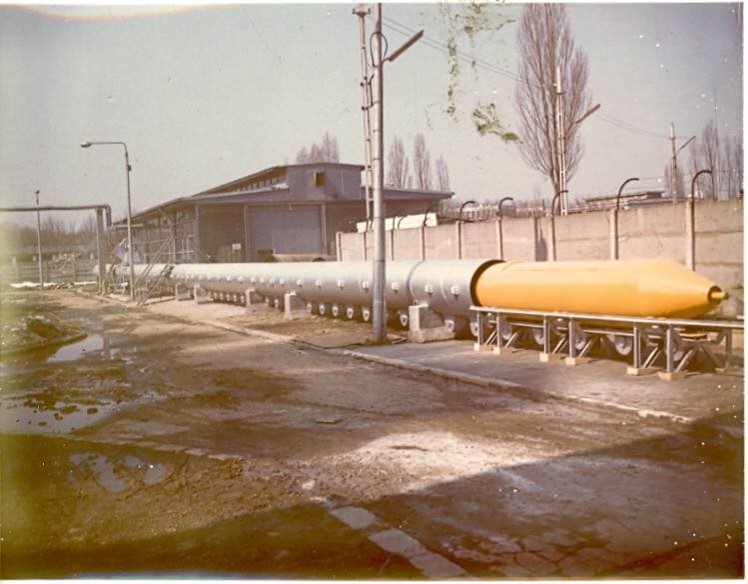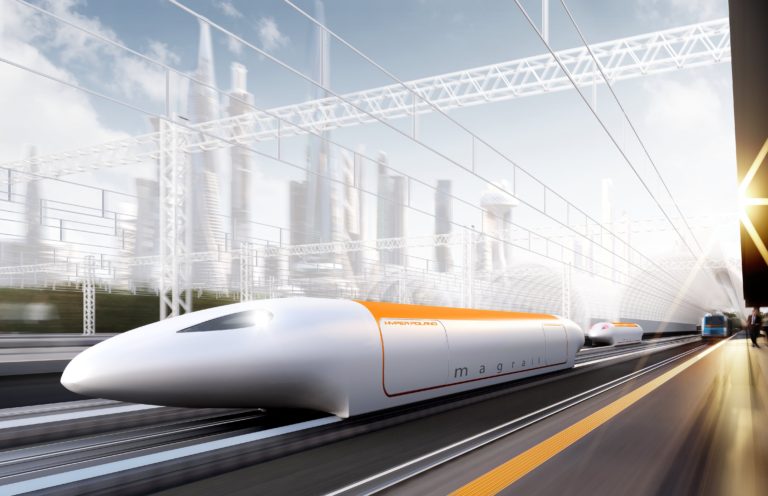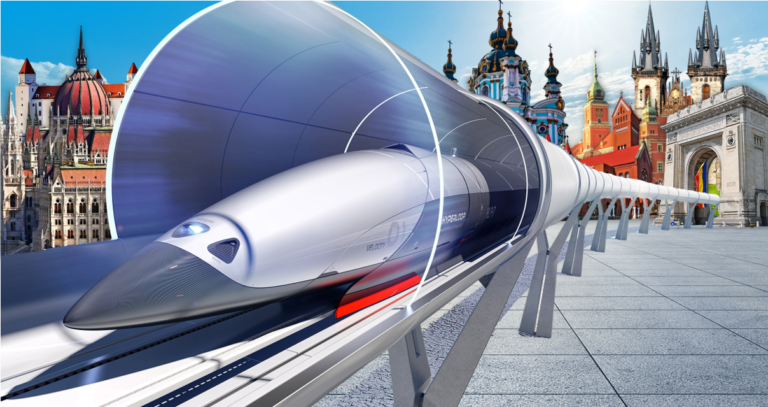Romanian inventor Henri Coanda invented and tested the first vacuum tube transport test (what is now called the Hyperloop ); the first successful test with the vacuum tube was carried out in Bucharest, near CET SUD, in June 1971, using a pipe of 200 meters long and one meter diameter, which established the world record for the World’s First Hyperloop , according to the Academy Of World Records.
After the success of the test, which used the “Coanda effect”, the authorities set up a Branch of the “Aerotubexpres Department” in Măneciu Ungureni, in Ciucaş Mountains. On a length of 1,300 meters there were two pipes, with a diameter of 1,020 millimeters. The route followed the river Teleajan, the Adevarul reports.
The propulsion station was made up of four fans. The freight containers did not reach a speed of more than 35 kilometers per hour, but managed to get along the sinuous route imagined at Măneciu. The system was automated and made from the control panel.
After 1980, eight years after the death of Henri Coanda, the transport of people in pipelines (what is now called Hyperloop) was also experienced. A six-meter-long steel capsule was built, where two people entered.
A pipeline of 400 meters was built and the container had its own braking system. The speed was no more than 70 kilometers per hour, and the big problem was the deafening noise in the capsule.
Such lines were built at Baia Mare and the Danube Delta, but they did not survive long after the 1989 Revolution.
“The Romanians have carried out the ironworks made after the ideas of Henri Coanda, and in Măneciu there are only concrete foundations,” the Adevarul reports.


“The issue of Chinese trains is that when they travel at 350 kilometers per hour they become insecure. Few know that in the 1970s, the great Romanian scientist Henri Coanda invented a faster train than the Chinese, able to travel at speeds of over 500 kilometers per hour,” the Digi24 reports.
“In 1971, Henri Coanda’s team of researchers carried out the world’s first transport of goods through pipelines based on the atmospheric pressure difference (what is now called Hyperloop) over 300 meters.
Coanda designed a passenger train that had to run through pipelines on the Bucharest-Ploiesti route. The distance of 60 kilometers between the two cities was to be traversed in record time. “In the transportation of people he thought of Bucharest – Ploiesti in 6-8 minutes,” says Sorin Dinea, engineer.
Henri Coanda wanted his invention to be applied also to the transport of goods, between Constanţa Port and the steel mill in Galaţi.
“Prior to 1989, Coanda’s transport system was applied, at short distances, to two mining units at Baia Mare and Caraorman. The pipelines were transporting raw materials from quarries to factories. Although these inventions have worked, after 1989 research has been abandoned for lack of funds.”
“As for the exceptional work of Henri Coanda, while we (Romanians) turned his experiments into ruin, the Americans are determined to take over and revolutionize their train transport around the world,” Digi24 reports.



